INTRODUCTION
Concentration means loosening up the mind and bringing about a definite but not specified impartial unconcern to external influences. During the process of concentration the mind and body should be at ease and should not be in a state of conflict or disturbance. In order to achieve such a state of concentration, the various yogasanas, Pranayama and pratyahara in the practice of yoga, to get rid of mental influences that come in the way of concentration.
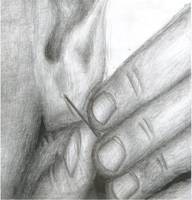
YOGA AND CONCENTRATION
The word yoga means 'union' and the unifying aspect of all forms of yoga are yoga meditation. While all religions encourage some form of meditation, it may be surprising to learn that science also encourages it as a way to manage stress and increase cardiovascular health. Unlike earlier, Yoga today is no longer restricted to a privileged minority of hermits; it has taken its place in our every day lives and have undergone a world wide awakening and acceptance in the last few decades.
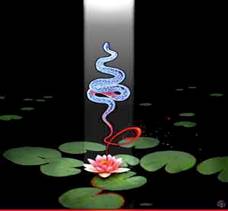
YOGA POSES FOR CONCENTRATION
Mountain Pose
The Mountain Pose is one of the most important poses in yoga. It is the start and finish point of all standing poses. When standing in mountain pose, the mind is quiet and the body strong and still, like a mountain. This is a pose you can practise in your daily life, practising to stand correctly will have a profound influence on your physical and mental well being.
Forward Bend Pose
Stretches the legs and spine, rests the heart and neck, and relaxes mind and body. Forward bend poses look very simple and easy but they do have very beneficial effects on the entire system. The forward bend asanas or postures have a massaging action on the organs in the upper body. Forward bends open up your back, promote total exhalation of air from the lungs by compressing the chest and also help to calm down your mind.
Triangle Pose
In this exercise, you build up strength in the lower back and upper legs while you remove tension from the lower and upper back, the hips and the hamstrings through both the twist and the stretching. The exercise is good for your sense of coordination and sense of balance. You need a lot of concentration and precision to be able to carry it out correctly.
Sun Salutation
Sun Salution is one of the more common postures within Yoga. This particular exercise not only stretches your spine and joints, but also works to regulate your breathing, calm your mind, and energize your body. Generally, Sun Salutation is used to begin a set of Yoga exercises. You can use it to begin your day.
Downward facing dog Pose
This pose is named as such as it resembles the shape of a Dog stretching itself out. This pose helps to strengthen, stretch and reduce stiffness in the legs while strengthening and shaping the upper body. Holding this pose for a minute or longer will stimulate and restore energy levels if you are tired. Regular practice of this pose rejuvenates the entire body and gently stimulates your nervous system.
YOGA ASANAS FOR CONCENTRATION
SHAVASANA
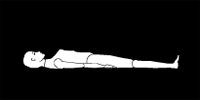
Shavasana is relaxation of body and mind in the position of lying on the back. This asana helps in relaxing mind and body and helps in restoring energy. It is a relaxing posture intended to rejuvenate one's body, mind and spirit. While shavasana is a good way to reduce stress and tension it is not recommended for meditation as it has a tendency to induce sleepiness.
Steps
• Lie on the back.
• Keep your spine, navel & pelvic in one line.
• Keep feet apart.
• Keep arms on the each side of body, palms facing to sky.
• Keep neck right or left side.
• Close your eyes & slowly try to concentrate each part of the body & try to relax that part.
SARVANGASAN
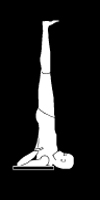
This asana is very good for the thyroid gland. This asana improves the reproductive organs in both men and women. It also helps in relieving bronchitis, dyspepsia, and varicose veins and increases digestive capacity. It stimulates the thyroid and para-thyroid glands and influences the brain, heart and lungs, and improves blood circulation. However, those suffering from high blood pressure should not practice this posture. The sarvanga-asana should not be performed by woman who are menstruating, as is the case with all inverted postures (where the legs are raise over the head.
Steps
• Lie on your back with legs and arms straight, feet together and palms on the floor beside your body. While exhaling, raise your legs slowly upto 90 and then the whole body and the rest your weight on the arms so that the chin touches the jugular notch.
Bring the arms and hands to support your body at the hip region (fingers at the back and thumb in front of the body). The entire weight of your body rests on the head, neck and shoulders while the arms are used for balancing.
Keep the trunk, legs and hips in a straight line and as vertical as possible Focus your eyes on your toes, with your chin pressed against the chest. Retain the posture for one for three minutes.
While exhaling, return to the lying position by bringing the leg backward and releasing the hands and the palms.
MATSYASANA
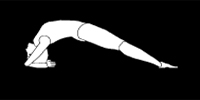
This asana is very useful for persons suffering from chronic cough, bronchial asthma, congestion, infected tonsils and other respiratory disorders. Problems relating to thyroid and para-thyroid glands can also be overcome be done to derive the full of Sarvangasana.it is recommended that you breath while holding it for between two and four minutes.
Steps
• Sit with your legs fully stretched out. Bend each leg at the knees and place your feet on the other hip joint. Both the heels are adjusted in such a way that each presses the adjacent portion of the abdomen. This forms the foot-lock in a sitting position.
• Bend backwards and, exhaling, rest your weight on the elbows. Push your neck backwards and slightly rise the hip upward thus making an arch of the spine.
• Then, by making hooks of the forefingers, hold your toes on the corresponding side without crossing your arms.This posture should be maintained for some time with slow and deep breathing.
• For reverting to the original position, release the foot-lock and return to the supine position by lowering the arch.
SHIRSHASANA
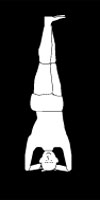
Sirsasana meaning headstand is considered to be one of the most important yoga poses. Sirsasana is known as "the queen of poses", and the reason relates to the effect it has on the brain and mind. The inversion of this pose causes increased and unrestricted blood flow to the brain. This brings increased oxygen, nutrient and vitality providing energy to the mind, clarity of thought and ease of concentration.
Steps
• Start by placing yourself opposite to a wall. Sitting on your legs, bend the elbows and place hands on opposite arms.
• Lean forward and place the elbows down perpendicular to the floor.
• Without moving the elbows open the lower arms into a triangular shape, creating an 80 degrees angle. Keep fingers interlocked.
• Place the crown of the back on the floor supported by the hands. Keep the hands on the back of the head.
• Straighten the knees and walk towards the body, raising the upper body.
• Lift the legs up balancing the legs on a wall to start with until you can balance your body up without falling onto your back. Bring feet away from the wall keeping the knees up straight. Breathing normally, concentrating on the breathing for balance.
• Keep the pressure away from the head supporting the body weight mainly with the forearms. Hold this posture for about 3 to 5 minutes to obtain maximum benefit. To come out drop the legs down gradually and rest in the child pose for at least 10 seconds.
PARYANKASANA
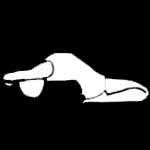
Paryanka means a bed, couch or sofa. This asana is a continuation of Supta Virasana. In it the body resembles a couch, hence the name.
Steps
• Sit in Virasana
• Exhale and recline on the back. Let the neck and the chest and arching the back up rest only the crown of the head on the floor. No part of the trunk should be on the floor.
• Bend the arms at the elbows. Hold with the right hand the left upper arm near the elbows and with the left hand the right upper arm near the elbow. Rest the folded arms on the floor behind the head.
• Stay in the pose for a minute with even breathing.
• Inhale, rest the trunk and d neck on the floor, release the hands and sit up in Virasana.
• Then straighten the legs one by one, lie flat on the back and relax.
ASTROLOGY
A unique characteristic of astrology are the yoga's. Yoga's are planetary positions that lead to a certain result. Yogas are important combinations in Vedic Astrology. Yogas are formed by planets being angular and well posited. Yoga's are planetary positions that lead to a certain result. Yoga is a term for good fortune and unless specified otherwise, yoga is a good yoga. Yoga is a particular placement or combination of planets, which collectively raise the fortunes of a person, which cannot be deciphered by individual study of placement of participating planet. According to astrological reports for yoga asanas the above mentioned asanas are said to be effective for those who come under the following zodiac sign.
• VIRGO
• GEMINI